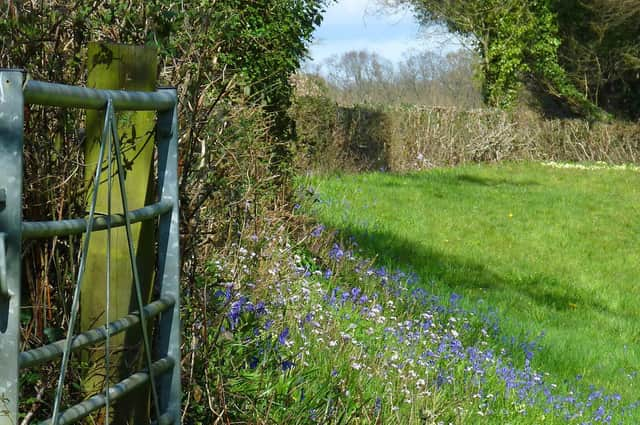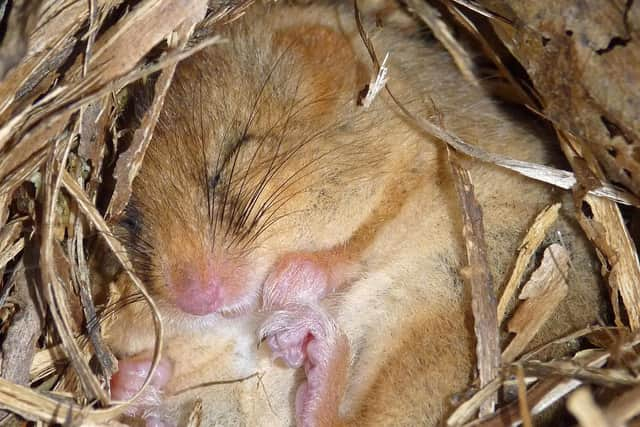Knepp Wildland Foundation column: Why we need to value hedgerows


Hedgerows provide much of the structural framework that forms the quintessentially British countryside. They have been likened to the stitching in a giant patchwork quilt of the fields and meadows. The great 19th-century nature writer Richard Jefferies wrote: “The hedges – yes, the hedges, the very synonym of Merry England – are yet there, and long may they remain. Without hedges England would not be England.”
As linear wildlife corridors, hedges provide the largest area of semi-natural habitat in the UK, extending more than 300,000 miles. Sadly, though, the majority are in poor condition – and many more have simply disappeared. Their removal from the landscape began in earnest after the last war, with about 125,000 miles being grubbed out to increase the area of productive farmland. Even more fell victim to EU farming policy through the 1970s and ’80s, amounting to a near 50 per cent loss overall. Hedgerow removal, incentivised by subsidies, enabled the use of new, industrial-sized agricultural vehicles, increasing efficiency of production over vast fields.
Advertisement
Hide AdAdvertisement
Hide Ad

Hedges were once valued and nurtured, primarily as a means of containing or keeping out livestock. However, with the invention of barbed wire fences this function became redundant. Today, in the middle of biodiversity and climate crises, we must value hedgerows for more pressing reasons.
As we speed through the countryside barely noticing these familiar features, one could be forgiven for asking: “What did hedgerows ever do for us?” The list is long. Hedgerows, and the majestic trees often dotted along them, lock up carbon, purify air, alleviate flooding and soil erosion, protect crops and livestock from wind, mitigate atmospheric pollution and support a wealth of fauna by providing food, shelter and protection from predators, nesting and roosting sites, and by assisting their movement across the landscape. They provide pollination and natural pest control services for crops, and even sustenance for us – for me, life would be intolerable without sloe gin.
Damp ditches and grass field margins further increase their value for wildlife.
Many of our hedgerows are truly ancient, dating back to Bronze Age times, left as boundary strips during the clearance of woodland for agriculture. In spring, their banked bases are splashed with the vivid colours of bluebells, wood anemone, primroses and other flowers, which testify to their origin. Many others, comprised mainly of hawthorn, were planted when the first field boundaries were marked out over the long history of Enclosure Acts. The poor condition of many hedgerows today can be attributed to both over-management and neglect. Harsh annual flailing to the same height results in the formation of woody ‘knuckles’ and widening gaps, eventually leading to the hedge’s demise. Neglect results in a line of trees. It is much better, and cheaper, to trim hedges in late winter on a three-year rotation, gradually raising the cutting level to encourage a dense, healthy structure and the formation of blossom and fruit.
Advertisement
Hide AdAdvertisement
Hide AdExcellent advice on management and the rejuvenation of hedgerows at the end of their natural life-cycle is available through Hedgelink UK (hedgelink.org.uk) and the South of England Hedgelaying Society (sehls.weebly.com). Help is at hand and the future of our hedgerows looks brighter. The Secretary of State recently announced the shape of our post-Brexit agricultural policy, including sensitive hedgerow management within the planned Sustainable Farming Incentive. Meanwhile, there will be around 30 per cent uplift in existing Countryside Stewardship grants, some of which already support good hedgerow management. There is hope.
Comment Guidelines
National World encourages reader discussion on our stories. User feedback, insights and back-and-forth exchanges add a rich layer of context to reporting. Please review our Community Guidelines before commenting.
